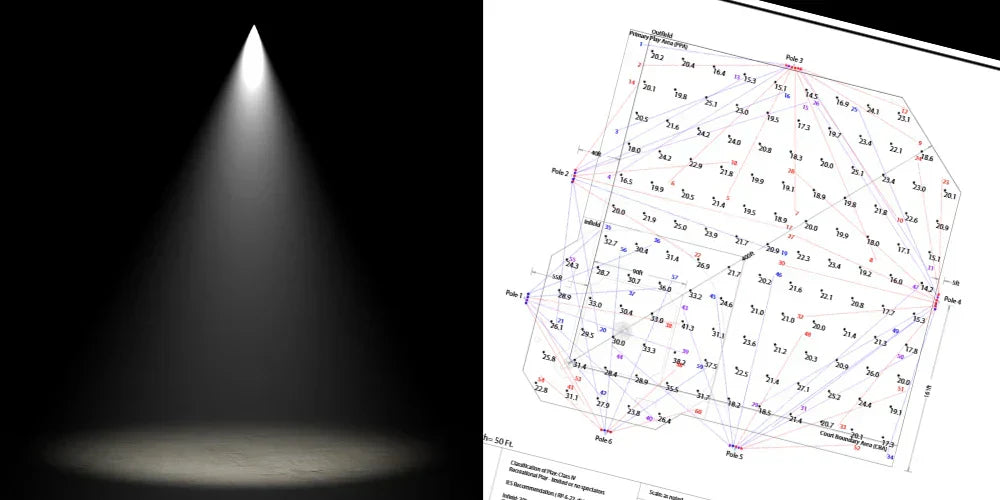In today's energy-conscious world, efficient lighting control has become a top priority for homeowners, businesses, and facility managers alike. Among the various dimming technologies available, 0-10V dimmer switches have emerged as a popular and versatile solution. These innovative devices offer precise control over lighting levels, enabling users to create the perfect ambiance while reducing energy consumption and extending the lifespan of their lighting fixtures.
What Are 0-10V Dimmer Switches?
0-10V dimmer switches, also known as 0-10V dimmers or 0-10V lighting controls, are electronic devices designed to regulate the brightness of compatible lighting fixtures. They operate by sending a low-voltage control signal ranging from 0 to 10 volts DC (direct current) to the connected light sources. This control signal determines the dimming level, with 0 volts representing the off state and 10 volts representing the maximum brightness.
How Do 0-10V Dimmer Switches Work?
The principle behind 0-10V dimmer switches is relatively straightforward. These devices are typically installed in parallel with the lighting fixtures they control. They generate a low-voltage control signal that is transmitted to the connected lights through a separate set of low-voltage wires.

The lighting fixtures compatible with 0-10V dimming technology are equipped with specialized drivers or ballasts that can interpret the control signal and adjust the brightness accordingly. As the control voltage increases from 0 to 10 volts, the light output gradually increases from off to full brightness.
The way this works is as follows:
- 0 Volts: At 0 volts, the light fixtures are turned off, providing no illumination.
- 10 Volts: At 10 volts, the light fixtures are operating at their maximum brightness.
- Intermediate Voltages: Any voltage between 0 and 10 volts will result in a corresponding dimming level, allowing you to fine-tune the brightness to your desired setting.
This precise control over the voltage ensures that you can create the perfect lighting ambiance for any occasion, whether you're setting the mood for a romantic dinner or optimizing the lighting for a productive work session.
It's important to note that 0-10V dimmers do not directly control the power supply to the lighting fixtures. Instead, they communicate with the drivers or ballasts, which then regulate the power delivered to the light sources, enabling smooth and precise dimming capabilities.
Advantages of Using 0-10V Dimmers
0-10V dimmers offer several advantages that make them an attractive choice for various lighting applications:
- Energy Efficiency: By allowing users to adjust the light output to their desired levels, 0-10V dimmers can significantly reduce energy consumption and operating costs, contributing to a more sustainable and eco-friendly environment.
- Versatility: These dimmers are compatible with a wide range of lighting technologies, including LED, fluorescent, and certain types of HID (High-Intensity Discharge) lamps, making them a versatile solution for various lighting scenarios.
- Precise Dimming Control: With the ability to adjust light levels in increments as small as 1%, 0-10V dimmer switches offer precise control over the lighting environment, enabling users to create the perfect ambiance for any occasion.
- Extended Lamp Life: By reducing the power supplied to the light sources, 0-10V dimmers can extend the lifespan of the connected lamps, resulting in lower maintenance costs and reduced environmental impact.
- Compatibility with Building Automation Systems: Many 0-10V dimmer switches can be integrated with building automation systems, allowing for centralized control and scheduling of lighting levels, further enhancing energy efficiency and convenience.
Types of Lighting Compatible with 0-10V Dimmers
0-10V dimmer switches are designed to work seamlessly with a variety of lighting technologies, including:
- LED Lighting: LED (Light-Emitting Diode) fixtures that are specifically designed for 0-10V dimming control can be easily integrated with 0-10V dimmers, enabling smooth and flicker-free dimming performance.
- Fluorescent Lighting: Fluorescent lamps equipped with compatible ballasts can be effectively controlled by 0-10V dimmers, allowing for energy-efficient and precise dimming capabilities.
- HID Lighting: Certain types of HID (High-Intensity Discharge) lamps, such as metal halide and pulse-start metal halide lamps, can be dimmed using 0-10V dimmers when paired with compatible ballasts or drivers.
It's crucial to ensure that the lighting fixtures and their drivers or ballasts are specifically designed for 0-10V dimming control to ensure proper operation and avoid potential compatibility issues.
Comparing 0-10V Dimmer Switches with Other Dimming Technologies
While 0-10V dimmer switches offer numerous advantages, it's important to understand how they compare to other dimming technologies available in the market:
| Dimming Technology | Advantages | Disadvantages |
|---|---|---|
| 0-10V Dimmers | - Precise control - Compatible with various lighting types - Integrates with building automation systems |
- Requires compatible drivers/ballasts - Additional low-voltage wiring needed |
| Phase-Cut Dimmers | - Simple installation - Compatible with standard incandescent/halogen lamps |
- Limited compatibility with LED/fluorescent - Potential for flickering or noise |
| DALI (Digital Addressable Lighting Interface) | - Digital control - Bidirectional communication - Flexible configuration |
- More complex installation - Higher initial cost |
| Wireless Dimmers | - No additional wiring required - Convenient control via mobile apps |
- Limited range and potential interference - Requires compatible lighting fixtures |
The choice of dimming technology ultimately depends on factors such as the lighting type, desired control features, installation requirements, and budget considerations.
0-10V Dimmers for LED and Fluorescent Lighting
LED and fluorescent lighting technologies have become increasingly popular due to their energy efficiency and long lifespan. To effectively dim these types of lighting, 0-10V dimmer switches are often the preferred choice:
LED Lighting:
LED fixtures designed for 0-10V dimming control typically incorporate specialized drivers that can interpret the control signal and adjust the light output accordingly. These drivers are responsible for regulating the current supplied to the LED modules, enabling smooth and flicker-free dimming performance.
When selecting 0-10V dimmers for LED lighting, it's crucial to ensure compatibility between the dimmer, the LED driver, and the LED fixture. Manufacturers often provide compatibility lists or guidelines to assist in selecting the appropriate components.
Fluorescent Lighting:
Fluorescent lamps require ballasts to operate, and for 0-10V dimming control, compatible ballasts are necessary. These ballasts can interpret the control signal from the 0-10V dimmer and adjust the power supplied to the lamps, enabling dimming functionality.
It's important to note that not all fluorescent ballasts are compatible with 0-10V dimming. Consult with the manufacturer or refer to product specifications to ensure compatibility between the dimmer, ballast, and fluorescent lamps.
Both LED and fluorescent lighting systems with 0-10V dimming capabilities offer energy-saving benefits and precise control over light levels, making them ideal for various applications, such as commercial spaces, offices, and residential settings.
Understanding Voltage Ranges: 120-277V
0-10V dimmer switches are available in different voltage ranges to accommodate various electrical systems and applications. The most common voltage ranges for 0-10V dimmers are:
- 120V: These dimmers are designed for use in residential and light commercial settings with a standard 120V AC (Alternating Current) electrical system.
- 277V: Dimmers in the 277V range are typically used in commercial and industrial applications where the electrical system operates at a higher voltage of 277V AC.
It's crucial to select a 0-10V dimmer switch that matches the voltage of the electrical system it will be installed in. Using a dimmer with an incorrect voltage rating can lead to potential safety hazards and damage to the dimmer or connected lighting fixtures.
Some 0-10V dimmers are designed to operate within a wider voltage range, such as 120-277V, providing flexibility and compatibility across various electrical systems. These multi-voltage dimmers can be particularly useful in applications where the voltage may vary or in situations where future changes to the electrical system are anticipated.
When installing 0-10V dimmer switches, it's essential to consult with a qualified electrician or refer to the manufacturer's specifications to ensure proper voltage compatibility and adherence to local electrical codes and regulations.
Understanding Voltage Control and Dimming Levels
The key to effectively using 0-10V dimmer switches lies in understanding the relationship between the control voltage and the corresponding dimming levels. As mentioned earlier, the 0-10V control voltage range corresponds to a specific range of brightness levels, with 0 volts representing the lights being turned off and 10 volts representing the maximum brightness.
It's important to note that the dimming levels may not be linearly proportional to the voltage. Some 0-10V dimmers may have a more logarithmic or exponential relationship between the voltage and the perceived brightness, which can create a more natural and visually pleasing dimming experience.
Additionally, it's crucial to ensure that the 0-10V dimmer switch is compatible with the specific lighting fixtures and drivers/ballasts being used. Incompatibility can lead to issues such as flickering, improper dimming, or even damage to the lighting components.
Choosing the Right 0-10V Dimmer Switch for Your Needs
When selecting a 0-10V dimmer switch, there are several factors to consider to ensure you choose the best solution for your specific needs:
- Load Capacity: Determine the total wattage of the lighting fixtures you plan to control and select a dimmer with a sufficient load capacity to handle the load.
- Compatibility: Ensure that the 0-10V dimmer is compatible with the type of lighting fixtures (LED, fluorescent, etc.) and the corresponding drivers or ballasts in your system.
- Dimming Range: Consider the desired dimming range, from the lowest to the highest brightness levels, and choose a dimmer switch that can accommodate your requirements.
- Control Features: Evaluate the additional features offered by the 0-10V dimmer switch, such as manual or remote control, preset lighting scenes, and integration with smart home systems.
- Installation Requirements: Assess the physical size and wiring requirements of the dimmer switch to ensure it fits within your electrical box and can be easily installed.
- Energy Efficiency: Look for 0-10V dimmer switches with energy-efficient features, such as low standby power consumption, to maximize the energy savings.
By carefully considering these factors, you can select the 0-10V dimmer that best meets your lighting control needs and provides a seamless and efficient user experience.
Common Applications of 0-10V Dimmer Switches
0-10V dimmer switches find a wide range of applications across various settings, including:
- Residential Lighting: In homes, these dimmer switches can be used to control the brightness of living rooms, bedrooms, dining areas, and other spaces, allowing homeowners to create the perfect ambiance for different activities and moods.
- Commercial Lighting: Offices, retail stores, restaurants, and other commercial spaces can benefit from the precise lighting control offered by 0-10V dimmer switches, which can help optimize productivity, enhance the customer experience, and reduce energy costs.
- Institutional Lighting: Hospitals, schools, and other institutional settings can utilize 0-10V dimmers to provide versatile lighting control, ensuring the appropriate brightness levels for various tasks and activities.
- Industrial Lighting: Manufacturing facilities, warehouses, and other industrial environments can leverage 0-10V dimmer switches to optimize lighting levels, improve worker safety, and enhance overall productivity.
- Hospitality Lighting: Hotels, resorts, and other hospitality venues can use 0-10V dimmers to create a sophisticated and inviting atmosphere, allowing guests to customize the lighting to their preferences.
As energy efficiency and sustainable practices continue to gain importance, 0-10V dimmer switches have emerged as a powerful solution for efficient lighting control. With their precise dimming capabilities, compatibility with various lighting technologies, and integration with building automation systems, these innovative devices offer numerous benefits for both residential and commercial applications.
Looking ahead, the future of lighting control will likely see further advancements in 0-10V dimmer technology, including enhanced energy-saving features, improved user interfaces, and seamless integration with smart home and building automation systems. As the demand for energy-efficient and customizable lighting solutions continues to grow, 0-10V dimmer switches will undoubtedly play a pivotal role in shaping the future of sustainable and intelligent lighting control.





